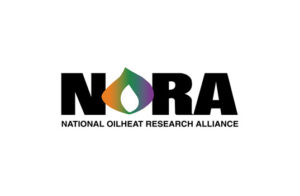NORA Project Yields New Boiler Design
It all started with a PON. That is, a “project opportunity notice.” The notice, issued by the National Oilheat Research Alliance, sought a design for a more efficient tankless coil boiler.
Energy Kinetics, a manufacturer in Lebanon, N.J., decided to take up the challenge, but first the company had to set aside some reservations among its dealers about the whole idea of tankless coil boilers.
“When we talked to our dealers they said they didn’t really sell a lot of tankless coils,” said Roger Marran, president of Energy Kinetics, in a phone interview with Fuel Oil News. “The dealers viewed tankless coils as older technology. So, it wasn’t necessarily on our radar, but when NORA came out with the project opportunity notice, we started looking at them more closely.”
NORA, based in Alexandria, Va., was authorized by Congress in 2000 to provide funding that would allow the oil heating industry to provide more efficient and more reliable heat and hot water to consumers, according to its website. Under a government sanctioned “check-off” program, $0.002 is collected at the wholesale level on every gallon of heating oil sold. The collected funds are used to support the four key activities of NORA: consumer education, professional education, improving energy efficiency and safety, and research.
NORA and Energy Kinetics did market research that showed roughly half the oil boilers sold in the U.S.—somewhere around 30,000—are tankless coils, Marran said.
“We saw that we had a great opportunity to go after that segment of the market with something that’s more price competitive and something that’s more efficient, quieter, with better hot water quality,” Marran said.
Energy Kinetics developed the unit, dubbed the “Ascent Combi,” in about 18 months, Marran said. “We were able to do that because this is not a new pressure vessel for us. It’s basically the spiral-type design we’ve been building for almost forty years—that’s the heart of the heating system. So, designing one that would suit this application was an incremental innovation over what we’ve done prior.”
The unit features a simplified control optimized for all boiler heat and hot water functions, Marran said. There is no zone control.
The controls on the Ascent are simpler compared to the integration that the manufacturer does with its System 2000, which is designed to thermally purge to keep the boiler cold when it’s off, so there are minimized off-cycle losses. “Because the Ascent needs to run efficiently when maintaining temperature, we could not take advantage of thermal purge technology,” Marran said.
The key components of the system are:
A pressure vessel that was built similarly to the company’s existing models, modified to provide instantaneous and continuous hot water at a consistent temperature.
Simplified controls.
The same burners that the manufacturer has used for many years, and that have “a really good confidence level with field acceptance and reliability,” Marran said.
The unit also features a high-temperature stainless alloy combustion chamber. “That was something we started on with a project opportunity notice a few years prior, and we had done a lot of testing on it,” Marran said. “We felt that was important because we see people pulling combustion chambers out to tune up equipment, which they really shouldn’t do. But because they do it we wanted to give them an opportunity with a chamber that was designed to be pulled out and put back in. So overall, the boiler uses similar controls and the same circulator and components and everything else that is built into other systems. It really is an incremental innovation, not any big leap in design in areas that we didn’t have knowledge or field experience in before.”
The company started selling the units in September, Marran said. “When they see it live-fire, people get the sense that it’s not some whole new and different technology—something else that they’re going to have to study and learn,” Marran said. “That’s been really important to the launch of the product, because if they’re comfortable with other boilers they’re comfortable with this.”
Marran first detailed how his company responded to the call by NORA during a presentation he gave at the Southern New England Energy Conference Sept. 18-19 at Gurney’s Resort & Marina in Newport, R.I.—Stephen Bennett
Stephen Bennett is the editor of Fuel Oil News.
